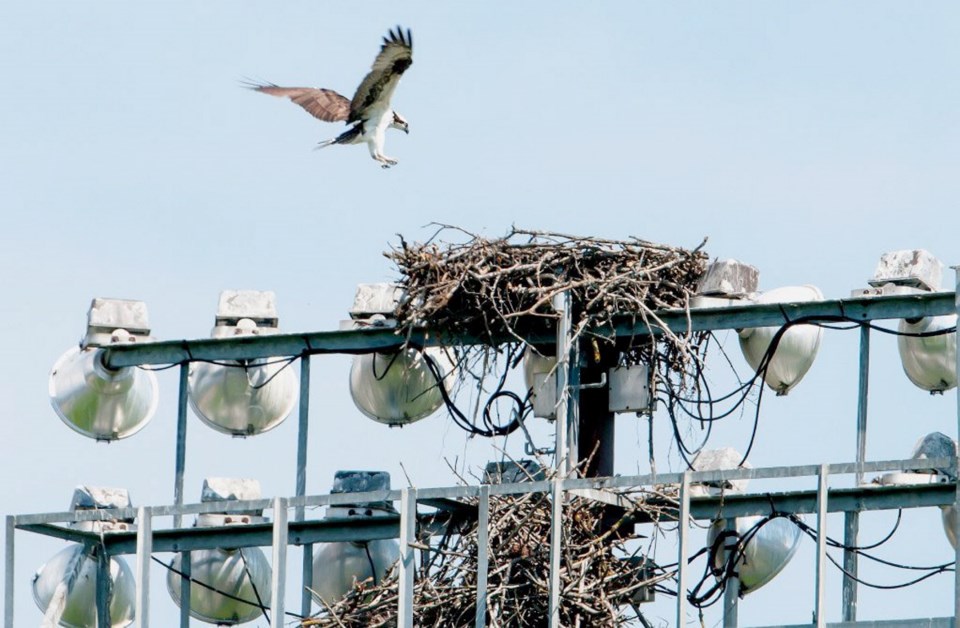When Jacqueline Davis noticed an osprey building its home atop a 16-bulb light standard beaming down on Royal Athletic Park, she envisioned slow-cooked eggs or a nest turned to kindling.
The nest has become an attraction for North Park residents, who sometimes wander into the adjacent parking lot with binoculars.
But Davis’s new avian neighbours should be fine, says a wildlife expert.
Many urban birds make homes in unusual places.
“There are lots of animals that have adapted to the urban area,” said Kari Marks, manager of B.C. SPCA’s WildARC program.
Marks said “cavity nesters” are the most common: starlings, house sparrows and wrens that make homes in nooks and crannies in buildings. But bats and owls have also been known to settle down in human-made structures.
City of Victoria spokeswoman Katie Hamilton said staff are monitoring the osprey nest at Royal Athletic Park and have fenced off the area below it.
Many city facilities are within natural habitats — most notably Beacon Hill Park — and staff occasionally have to deal with human-animal interactions. Crows have been known to dive-bomb pedestrians during nesting season, cougars have been reported within city limits and peacocks sometimes wander outside of Beacon Hill Park.
“Our approach is always to avoid disturbing wildlife or nests, while ensuring the safety of park users,” Hamilton said.
At the University of Victoria, ospreys have called Centennial Stadium home since 2005, said Sarah J. Blackstone, adviser to the provost, special projects. Blackstone is preparing a website documenting the birds, complete with a live webcam feed.
There have only been a few incidents, she said. One year, the mother bird abandoned the nest, but a new family moved in two years later. In another case, the nest blew down, but the raptors managed to build a new one.
“It’s really quite common for osprey to build in fields like this. They’re not at all concerned about people and the noise,” Blackstone said.
“Every year that I’ve watched, they’ve had successful fledglings out of the nest, so that’s a very successful raptor nest.”
The only real downside is for the athletes, she said. Osprey are fish-eaters and typically drop leftovers over the side of the nest.
“We get reports all the time of things raining down on the players on the field and finding bits and pieces of fish,” Blackstone said.
“And any big bird like that does what I call projectile pooping.”
Osprey nests have been reported at stadiums and fields around North America, including South Whidbey High School’s football field and Mercer Island Stadium in Washington.
In Montana, the Missoula Osprey baseball team resisted an identity crisis in 2013 when two geese took over the osprey nest on the field. The team vice-president issued a statement saying a name change to the Missoulian Geese was “not in the immediate future,” the Missoulian newspaper reported.



